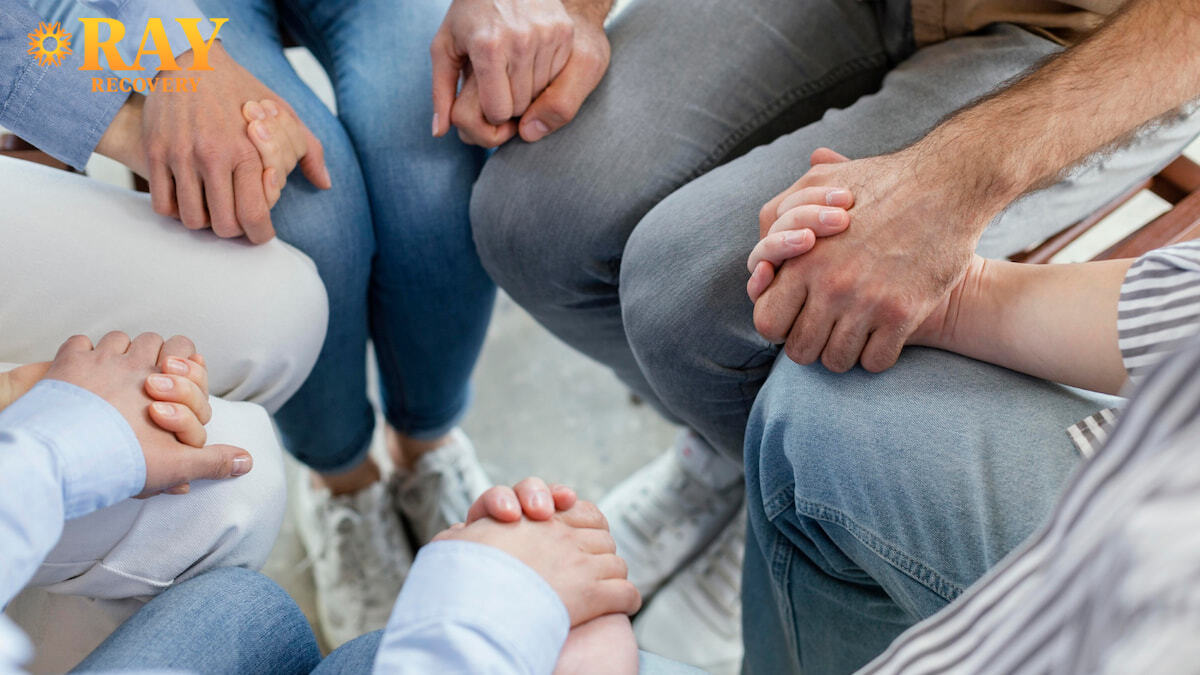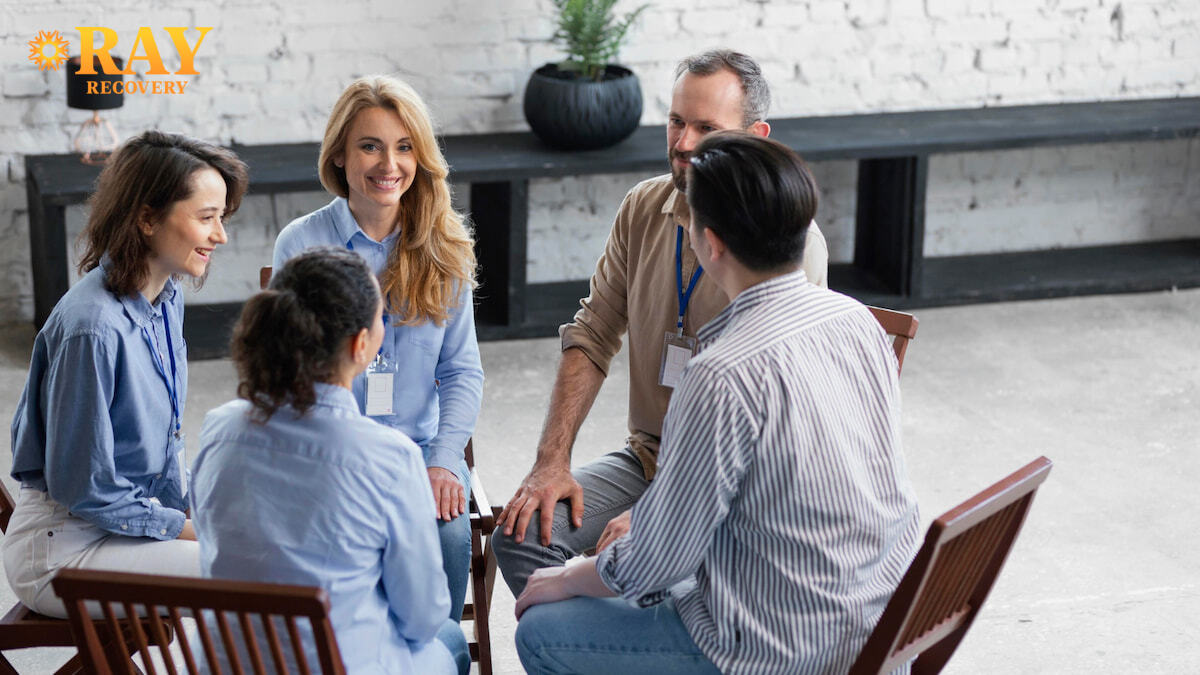Key points:
- Family therapy increases treatment engagement and retention, reducing dropouts and improving completion rates for faster recovery.
- It transforms home dynamics, lowers relapse triggers, and builds practical support systems that sustain long-term recovery.
- Practical family strategies, clear communication, boundaries and shared goals boost recovery capital and emotional resilience for every family member.
Addiction doesn’t just impact one person, it affects the entire family system. Broken trust, emotional distance, and communication breakdowns often develop alongside substance use. Family therapy works to heal these wounds and strengthen the foundation of support essential for long-term recovery.
Through guided sessions, families learn to rebuild trust, set healthy boundaries, and better understand the nature of addiction as a disease. Research consistently shows that when family members are involved in treatment, recovery outcomes improve significantly.
This article explores what studies reveal about the power of family therapy in addiction recovery and how involving loved ones can accelerate emotional healing and relapse prevention.
Why family involvement matters in recovery

When someone is working toward recovery, it’s common to think of the focus as being entirely on that individual. Yet the context around them, the family, the home environment, the relationships, can either reinforce recovery or undermine it.
The shift from “individual” to “family system”
Therapy models now recognise that addiction and recovery are not simply individual issues but relational ones. One comprehensive guide states: “It is essential to broaden the focus of SUD treatment from an individual to a family perspective.”
In practice this means that family therapy:
- encourages healthy communication and accountability,
- helps address underlying family dynamics that may have contributed to the issue, and
- aligns all members toward recovery rather than leaving them sidelined.
How family therapy accelerates recovery: the main mechanisms
Understanding how family therapy works helps you see why it tends to speed up recovery. Here are the key mechanisms, supported by research and clinical insight.
1. Better treatment engagement and retention
- Family involvement has been linked with increased rates of entry into treatment and reduced drop-out.
- When families understand what is happening, they’re more likely to help schedule appointments, attend sessions, and provide motivation.
- Early engagement means the individual is more likely to complete key therapy phases rather than leave prematurely, which in turn lifts long-term outcomes.
2. Improving the home environment and reducing triggers
- Recovery does not end when a person leaves the treatment centre. Back home, old patterns and triggers await. Family therapy helps shift the home system.
- For example, family-focused practices identify enabling behaviours, boundary issues, or communication breakdowns.
- By intervening at the family and household level, the therapy reduces relapse risk and helps build a safe, recovery-conducive environment.
3. Enhancing recovery capital through social and familial support
- A study of 1,313 adults in recovery found that people who lived with a partner or children reported greater “recovery strengths” than those who did not.
- In other words, family relationships can contribute positive recovery capital: the resources, connections, and support that help people sustain recovery.
- Family therapy explicitly builds these supports rather than leaving them to chance.
4. Addressing underlying relational and family-system issues
- Many families with addiction or substance-use history carry patterns of communication, conflict, trauma, or stress that predated or accompanied the addiction. Group therapy alongside family sessions can help open up those patterns in a supportive environment.
- When the entire family heals together, you not only support the individual’s recovery but reduce the chance of generational transmission of dysfunction or addiction.
5. Cost-effectiveness and overall outcome improvement
- Family-based treatments aimed at reducing SUDs are associated with lower delivery costs compared to non-family models.
- That means you get more impact per therapeutic dollar spent, and improved system efficiency for treatment programmes.
In sum, these mechanisms show how family therapy doesn’t just add to recovery but interacts with the process in foundational ways, making recovery faster, deeper and more sustainable.
What the research shows: key evidence

Let’s look at some of the most relevant scientific findings that support what we’ve described.
Systematic review findings
The 2022 review of family-based interventions found consistent evidence that including families in treatment leads to significantly better outcomes across multiple domains, not just reduced substance use. The review examined studies on both adolescents and adults and found that improvements extended to:
- Family functioning: Communication, trust, and emotional support within the household improved markedly, strengthening the recovery environment.
- Emotional regulation: Family therapy helped reduce stress and conflict, both of which are major relapse triggers.
- Treatment completion: Participants in family-inclusive programs were more likely to complete treatment than those in individual programs.
In simpler terms, therapy that involves parents, partners, or children doesn’t just help the person struggling with addiction, it improves the emotional health of the entire family system. This collective improvement becomes a powerful buffer against relapse.
Meta-analysis of clinical trials
The meta-analysis of 16 trials involving over 2,100 participants demonstrated that programs integrating spouses, parents, or significant others achieved better long-term abstinence rates than individual therapy alone. Participants whose families engaged in structured therapy sessions showed:
- Higher retention rates—they stayed in treatment longer.
- Improved relationship satisfaction—reduced family tension and better communication.
- Lower relapse risk—with positive effects lasting months after treatment ended.
The takeaway is clear: meaningful family participation transforms treatment from an isolated experience into a team effort. Even modest involvement, such as attending joint sessions or learning supportive communication strategies, measurably improves recovery outcomes.
Studies of recovery capital and social networks
Recovery doesn’t happen in a vacuum. One study assessed over 1,300 adults and found that individuals who lived with a spouse, partner, or children reported greater “recovery capital”, the total personal, social, and community resources that sustain recovery.
Those with strong family ties reported:
- Fewer psychological barriers to maintaining sobriety.
- More motivation to rebuild healthy routines.
- Better emotional resilience when facing stress or triggers.
Researchers concluded that family connections function as both emotional scaffolding and accountability systems. Family therapy strengthens this recovery capital by improving communication, restoring trust, and helping families share the responsibility of healing rather than placing it all on one person’s shoulders.
Implementation and barriers
While the evidence is strong, uptake in actual treatment settings is inconsistent. One study concluded that “little is known about the consistency of family therapy integration within SUD treatment facilities.” Other barriers include training, funding, scheduling, and family ambivalence.
These findings underscore both the opportunity (strong evidence) and the challenge (practical implementation) of family therapy in recovery.
Practical steps for making family therapy effective

If you’re supporting a loved one in recovery, here are tangible, actionable steps to maximise the benefits of family therapy and family-based involvement.
Step 1: Educate yourself and your family
- Learn how substance use disorders work, and how recovery unfolds. This builds realistic expectations.
- Define who you consider “family” in this process. The research emphasises that “family” may include grandparents, aunts/uncles, step-families or close significant others.
Step 2: Develop shared recovery goals and commitment
- Attend therapy sessions together where possible.
- Agree on what recovery means within your home and how each family member contributes.
Step 3: Improve communication and set clear boundaries
- Use sessions to learn communication skills: how to listen non-judgmentally, express support, ask open questions, and avoid enabling behaviours.
- Create healthy boundaries: for instance, what behaviour is acceptable, what support you commit to giving, and what you will not tolerate. Understanding how to set boundaries with an addict is crucial for both their recovery and your wellbeing.
Step 4: Address household triggers and behavioural patterns
- Identify old routines, situations or dynamics that may trigger relapse (for example, family conflict, unresolved grudges, enabling).
- Work with the therapist to redesign family patterns: maybe new family roles, new rituals, clearer expectations.
Step 5: Maintain support and accountability
- Keep attending family sessions beyond the initial phase of treatment. Recovery is a long-term process.
- Use family check-ins: how is the recovery going, what needs changed, what help is needed?
Step 6: Monitor and adapt for long-term sustainability
- Relapse risk remains real. Monitor changes in mood, behaviour, stress levels, family communication.
- If the loved one relapses or stumbles, turn it into a recovery moment not a failure: revisit therapy, rebuild together.
Step 7: Care for the supporting family members
- Family recovery means all members heal, not just the individual in treatment. Therapists often work with families to process their own trauma and stress through trauma therapy.
- Remember self-care: emotional fatigue, guilt, and burnout can affect family supporters too.
Common questions and how to think about them
FAQ
Is family therapy only useful for adolescents or can adults benefit?
Family therapy has been shown to help both adolescents and adults. A systematic review covering adult samples found positive outcomes for adult substance-use treatment when family was included.
What if my family member doesn’t want to attend family sessions?
The approach still offers value: even involving one concerned relative or significant other improves treatment engagement and outcomes.
Will family therapy replace individual therapy for the person in recovery?
No. Family therapy complements individual therapy. The individual still needs their own work while the family system is engaged in parallel to support and reinforce recovery.
Heal Together, Recover Faster
Recovery works best when families heal as one. At Ray Recovery, our family therapy programs in Ohio help loved ones reconnect, rebuild trust, and create a shared path toward lasting wellness. Our licensed therapists guide families through meaningful communication, boundary-setting, and emotional repair, essential tools for preventing relapse and sustaining progress.
If addiction has strained your relationships, it’s not too late to start over together. Reach out today to learn how Ray Recovery’s family-focused treatment can help your entire household move forward in strength, understanding, and renewed hope.


